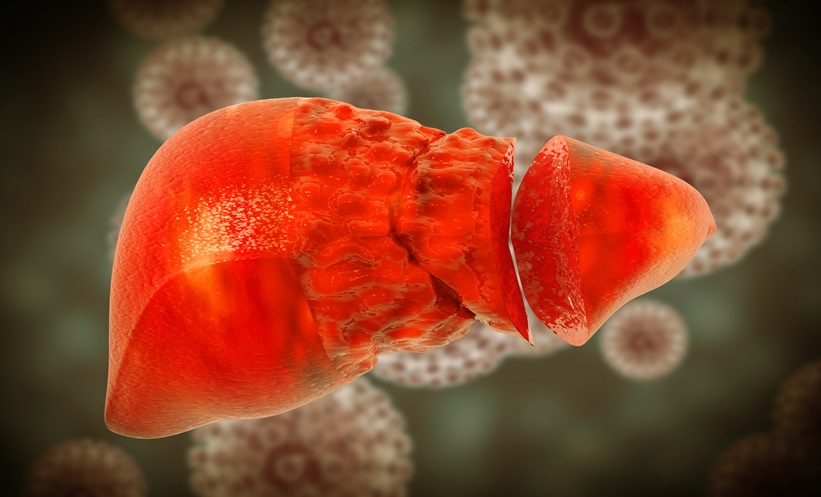Written by James Coker | Reporter, European Medical Journal | @EMJJamesCoker
![]()
Following the recent announcement by NHS England regarding their ambitious plan to eliminate hepatitis C in England as a major public health concern by the year 2025,1 at least 5 years earlier than the World Health Organization (WHO) target of 2030, the EMJ spoke to two leading experts heavily involved in NHS strategies to combat the condition. Outlined in the year of this world-renowned institution’s 70th anniversary, the target is both bold and exciting in equal measures. Firstly, from the clinical side, we spoke to Prof Graham Foster, who is National Clinical Chair for the Hepatitis C Delivery Networks at NHS England, about areas such as the practical application of NHS programmes, research advances in the field, and why there is so much optimism hepatitis C can be completely eliminated in England in such a short space of time. We also discussed a number of pertinent topics from a more strategic point of view with Peter Huskinson, the National Commercial Director of Specialised Commissioning at NHS England, including NHS targets and strategies, the NHS medicines procurement process, and the National Hepatitis C patient registry that began last year. Their answers are well worth a read for health professionals who focus on treating and preventing hepatitis C.
Prof Graham Foster
National Clinical Chair for the Hepatitis C Delivery Networks, NHS England
Q: Could you explain a little about the work of the laboratory research programme investigating the basic virology of hepatotropic viruses’ novel replication models for hepatitis C that you supervise? What have been the most notable findings from this programme over the years?
A: We are looking at growing patient-derived hepatitis C virus (HCV) in the laboratory. We have developed a technique, ‘capture-fusion’, that allows us to take serum from patients and grow the virus in the laboratory and we can then assess its response to anti-viral agents. This technique has allowed us to identify novel viral variants that have a reduced response to therapy. We are currently studying the interactions between drug resistance and response to interferon – a protein produced by virally infected cells that induces an anti-viral state – and have made some interesting new observations that may explain why some people are less responsive to anti-viral therapy than others.
Q: Could you tell us a little about your day-to-day role as National Clinical Chair for the Hepatitis C Delivery Networks?
A: My role is to address the clinical questions that arise from the programme and to ensure that our policies are clinically relevant and appropriate. I spend most of my time reviewing documents and ensuring that the recommendations are viable. I am the main port of call for clinical colleagues with questions about individual patient care and I act as the conduit to NHS England, explaining and justifying our decisions and making sure that colleagues are aware of the reasons underpinning our actions.
Q: It was recently announced on 5th January that 25,000 hepatitis C patients have received the new direct acting antiviral treatments in the HCV programme. What are you expecting to be the next milestone that will be passed in this programme?
A: My hope is that over the next 12 months a further 12,000 patients will be treated. We have already seen a decrease in the proportion of patients with cirrhosis receiving treatment and this is a welcome indication that we are beginning to see a reduction in end stage liver disease. I hope that over the next year we will see an increase in the proportion of people at high risk of infection undergoing therapy, in particular those who use drugs and are engaged in harm reduction programmes. We would hope that over the next 2–3 years we will see a reduction in onward transmission of the virus and this will indicate that we are beginning to get to grips with the infection.
Q: What are the main reasons you believe the operational delivery networks have been so successful in enabling many more patients to have access to antiviral therapy? Do you envisage any changes being made to the way these services operate from the experiences so far?
A: The success of the networks is mainly due to the commitment of the local viral hepatitis teams who have invested time and energy in organising local services that are delivering high quality clinical care in regions where therapy has never previously been available. I think that as the networks mature there will be a greater distribution of responsibility with more and more centres being approved to run their own multidisciplinary meetings as experience and expertise develops.
Q: Have you been surprised at the success of the HCV programme so far? What aspects have pleased you the most about it?
A: I am not particularly surprised – I have always believed that clinical colleagues will rise to the challenge and setting up and running the networks has posed formidable challenges. It is a testament to the commitment of clinicians that we have been so successful. I have, however, been surprised at the speed with which mortality and morbidity has fallen – I did not expect such a rapid reduction in the need for liver transplantation and this is for me, the most pleasing outcome to-date.
Q: How successful has the glecaprevir/pibrentasvir treatment option been since it was made available to patients in September?
A: We only offer access to treatments that have been proven to be effective in clinical trials and glecaprevir/pibrentasvir is a welcome addition to our armamentarium. We will be reviewing treatment outcomes over the next few months, but we expect response rates to be in line with the clinical trial data.
Q: What have been the most important advancements in treatment for hepatitis C you have witnessed during your career?
A: In my career the launch of effective all oral treatments has been the most important advance since the discovery of the virus. When I began treating people with viral liver disease we wrestled with ‘nonA nonB disease’ and I have seen the virus identified, characterised, and cured in less than 25 years. We are now seriously discussing eliminating the infection as a healthcare issue. This is an extraordinary achievement that has few parallels in modern medicine.
Q: What is the most pressing area in hepatitis C that requires greater research efforts in your view?
A: We know that after a virological cure some people with cirrhosis remain at risk of liver cancer. In my view understanding the reasons for this residual risk and identifying ways to identify and treat early liver cancers remains the area of highest unmet need.
Q: What areas of research in hepatitis C are you personally currently involved in?
A: We are looking at different approaches to finding and treating people with hepatitis C and we have a laboratory programme studying drug resistance in HCV and the interactions between the virus and the host innate immune response.
Q: How much has stigmatism of hepatitis C been a problem in treating patients over the years in your view? What strategies could be put in place to reduce this issue?
A: Many patients with hepatitis C have a history of intravenous drug use and such people are often severely stigmatised and reluctant to engage with clinical services. One of the unexpected benefits of HCV therapy is the increased understanding of these issues and there has been a great deal of good work looking at reasons for discrimination in this population and developing strategies to overcome it. I have seen a very welcome service redesign in the NHS with increased use of out-reach services to provide ‘patient-friendly’ care.
Q: How optimistic are you that the target of eliminating hepatitis C by 2025 will be achieved?
A: I am always optimistic, and I do believe that our targets are achievable. I believe that if we use the resources and the commitment of the NHS teams we can, and should, eliminate this infection.
Peter Huskinson
National Commercial Director of Specialised Commissioning, NHS England
Q: Could you tell us about your day-to-day role as National Commercial Director of NHS England?
A: My job is to enable clinicians to secure the maximum health gain for patients from every pound that tax-payers entrust to the NHS, available equitably and consistently across the country. My responsibility covers the 149 specialised services that NHS England commissions as well as all medicines and high cost med-tech devices hospitals use to deliver clinical services.
In practice this means six areas of work:
- Support to clinical policy development to prioritise the best value new treatments having secured the most competitive offers from industry
- Selecting the healthcare providers best placed to provide new and existing services for patients at the scale needed to be effective yet accessible
- Helping design payment systems to reimburse the specialised care that services deliver
- Enabling clinicians to develop the £300 million of incentives we make available each year for advances in quality and innovation
- Supporting teams across the country in the contract negotiation and year-round management of performance standards with the >270 hospitals that deliver specialised care
- Working with the pharmaceutical and med-tech industries to secure affordability and value for what they supply to hospitals
I am co-chair of the Blood and Infectious Diseases clinical programme of care board and managerial lead for the hepatitis C sustainable rollout programme, working alongside Prof Foster.
Q: There has been a lot of money and resources going into the hepatitis C (HCV) prevention programme, with successful results in terms of providing access to antivirals. Was this seen as a condition that required particularly urgent attention by the NHS?
A: Without doubt viral hepatitis is a major challenge to global health, with over 1.4 million deaths each year from the disease, more than HIV or tuberculosis. Some of the 160,000 people HCV affects most are among those with much poorest health outcomes. So, the advent of direct-acting antivirals with cure rates of >90% is an opportunity for us to make a huge difference in health and in tackling inequality. Getting the better of an infectious disease is a smart investment. It not only cures those who are treated, but also prevents the spread of disease, reducing the future impact on both patients and the NHS.
Q: What are the main reasons why NHS England decided to establish the target of eliminating hepatitis C by 2025?
A: Most countries are struggling to afford or to deliver treatment levels to achieve the WHO aspiration of elimination by 2030. Addressing both financial and service capacity are major challenges. For the NHS, with 160,000 people infected and 4,000 new chronic infections each year, and prices of £40,000–£80,000 per person when the drugs were launched, the affordability challenge is obvious.
The impact analysis published at the time National Institute for Health and Care Excellence (NICE) issued its guidance anticipated a ramp up to treating 15,000 patients per year by 2020. Even at these rates, the potential financial impact on the finances available for rest of the NHS is eye watering.
As such, we have spent the last 2 years doing four key things. We invested in excess of £200 million to treat patients with advanced disease, we established the clinical networks to prioritise those with the highest unmet need and deliver substantial year on year expansion in numbers treated, we built and implemented a national registry to ensure we have the data to demonstrate clinical outcomes and direct the rollout, and we worked to fast track new treatment alternatives and drive better value for patients and tax payers by bringing prices down, rewarding the pharmaceutical companies who do the most to make treatment affordable.
All of this has put us in a strong position where we can be confident of meeting the rates of treatment expansion that were published with the resources and service capacity we now have, which would see us eliminate the disease as a major public health concern by 2030.
So, why are we looking to go further?
Our initial discussions with the pharma industry suggested that they would be willing to help us to achieve more if we could strike a longer-term deal. As the NHS we could see that once we had the fundamentals in place it could be a platform from which we could go further. Clinicians have taken up the challenge to make the NHS resource available to treat as many people as possible by consistently opting for the lowest acquisition cost option that is clinically appropriate for each patient, knowing it enables the NHS to reach more patients.
Second, our modelling showed us that even at the expansion rates we have already committed to, the rate of new infections will reduce only gradually. If we could front-load rates of treatment without creating a financial problem, we would not only reduce the wait for treatment of those patients will less advanced disease, but prevent many thousands of people getting the infection in the first place. We have spent a year designing and planning for an innovative long-term deal which should reduce, by a minimum of 5 years, the time needed to reach elimination, and hopefully go much further than that.
Q: Could you describe the deals the NHS has made with the industry that have led to a reduction in deaths and a 50% reduction in the numbers of patients requiring a liver transplant? Why have these deals proven so successful?
A: Firstly, the amazing health outcomes are primarily the consequence of our clinical network leaders and teams finding and treating those with the most advanced disease and working so hard to expand services right across the country. The commercial deals are simply an enabler.
There are several factors that have driven better value. For half the population, 2 years ago there was a monopoly, but now we have 2–3 suppliers across all patient types. The NHS has run tendering every 6 months and we switched that from being a regional exercise to a national one to make the most of our buying power. We provided a ‘rate card’ for clinicians to provide objective information about the then substantial differences in costs for each type of patient. The response of clinicians moved in just a few months from using the lowest cost option a third of the time to nine times out of 10. This in turn meant that pharmaceutical suppliers could see that a lower price would lead to much greater share of business from the NHS, which has been decisive.
This repeated testing of the market every 6 months has allowed each competitor to keep responding as others jump ahead of them in providing improved value, to the benefit of patients and taxpayers.
Q: The next round of procurement begins in February, and is the single largest medicines procurement undertaken by the NHS. What additional challenges do you expect the NHS to face due to the unprecedented scale of this process?
A: For the clinical networks, having partners bringing both support for capacity and additional know-how, should be a tremendous resource. We foresee the need to expand the service model, which will enhance the capacity to grow treatment rates. Internationally there are examples of community pharmacists and drug treatment services delivering care to add to the delivery already taking place in hospitals and prisons.
The change in our mindset for all partners to make the most of the next 3–5 years covered by the deal is a key factor. I would say it is the difference between using your mobile phone sparingly whilst abroad where rates are high, to being on an ‘unlimited minutes’ deal.
Q: In what further ways can the NHS and drug companies collaborate to identify more people living with hepatitis C?
A: That is something we want the companies and each operational delivery network to work out locally; the right solution for inner-city Liverpool may not be the best approach for rural Lincolnshire. Concerted efforts on case-finding require the use of data, relationships, existing and new resources to find, test, support, and encourage people to engage and complete treatment. This can include everything from producing locally relevant information and publicity campaigns to encourage testing, to bringing pharma industry resources to unlock system wide issues such as engaging drug users and providing easy access to medications via innovative delivery solutions. At this stage, we don’t have firm expectations or requirements and are actively encouraging companies and operational delivery networks to discuss the opportunities and potential solutions to increasing testing.
Q: What are the main things the NHS is hoping to achieve from the procurement process?
A: The key feature of our approach is that we are looking to make payment more conditional on the outcomes for the population, not simply the supply of tablets, and to reward both the individual contribution of each company in achieving the NHS goals and the collective achievement, to produce more collaboration.
The approach will allow the NHS and partners to work with no limits on the number of patients treated without fear of exceeding the available drugs budget. We are looking for coherent strategies for each company that complement the NHS capacity and are shaped by patient input, as it becomes in their interest that the rates of diagnosis and retention in care expand alongside the scaling up of treatment.
Q: What are the best strategies in general to pursue to ensure the cost of drugs purchased by the NHS is as low as possible?
A: The willingness of clinicians and patients to move to the lowest cost, clinically appropriate treatment is a key factor. We are getting better at using the NHS national clout as one of the largest health systems in the world both strike deals on new drugs at launch alongside NICE, and to make use of tendering to drive down prices over time as competitors launch alternative medicines. The role of generic pharmaceutical suppliers and biosimilar manufacturers is key to ensure timely availability of better value options.
Q: Aside from collaboration with industry, what other strategies is the NHS planning to reach the goal of eliminating hepatitis C by 2025?
A: As well as expanding the service model and allowing each network to lead locally the innovation and expansion, there is a good deal of research in this field, and a key factor will be ensuring that the learning from both research and from the plans of each network is shared and adopted at scale to overcome the challenges we will face. I think it is clear that public awareness will be a key factor and the work of the Department of Health and Public Health England, as well as patient groups will be important.
Perhaps the most challenging patient group to reach will be those people who are former injecting drug users perhaps from years or decades previously who have no current symptoms but are infected with the disease. Finding effective strategies to ensure people come forward for testing will be a key challenge. The NHS and its partners are part of a National Strategic Group on Viral Hepatitis to provide a forum for considering how to tackle these challenges.
Q: In general, why is England in particular so well placed to achieve this target 5 years earlier than the WHO stated goal?
A: Some countries with a less developed public health system start with a much higher burden of infection than England, others have no single agency with national remit to bring partners together. Equally, there are countries we can learn from who have a much higher proportion of diagnosed patients than we do. I think the NHS has the potential to use our data, our know-how, and our purchasing clout in an integrated way, and the clinical leadership in place across the country will be key.
Q: Could you provide us with an update on the National Hepatitis C patient registry that was established in 2017? How useful have these data proven to be?
A: The annual report on Hepatitis C published by Public Health England recognises that one of the challenges in combatting the disease is getting accurate and timely information and reducing the uncertainty of estimates, for example, about the number of people with the disease.
The registry went live in the middle of last year and continues to develop including providing ways to link to key clinical systems used across the country. Having data about, for example, the genotype mix of patients and the proportions with cirrhosis is helpful to us in understanding the progress that is being made in treating populations. As the data matures the insights from the real-world evidence of outcomes has the potential to be a tremendous resource, which will be our focus in the months ahead.
References
- NHS England. NHS England sets out plans to be first in the world to eliminate Hepatitis C. 2018. Available at: https://www.england.nhs.uk/2018/01/hepatitis-c-2/. Last accessed: 19 February 2018.









